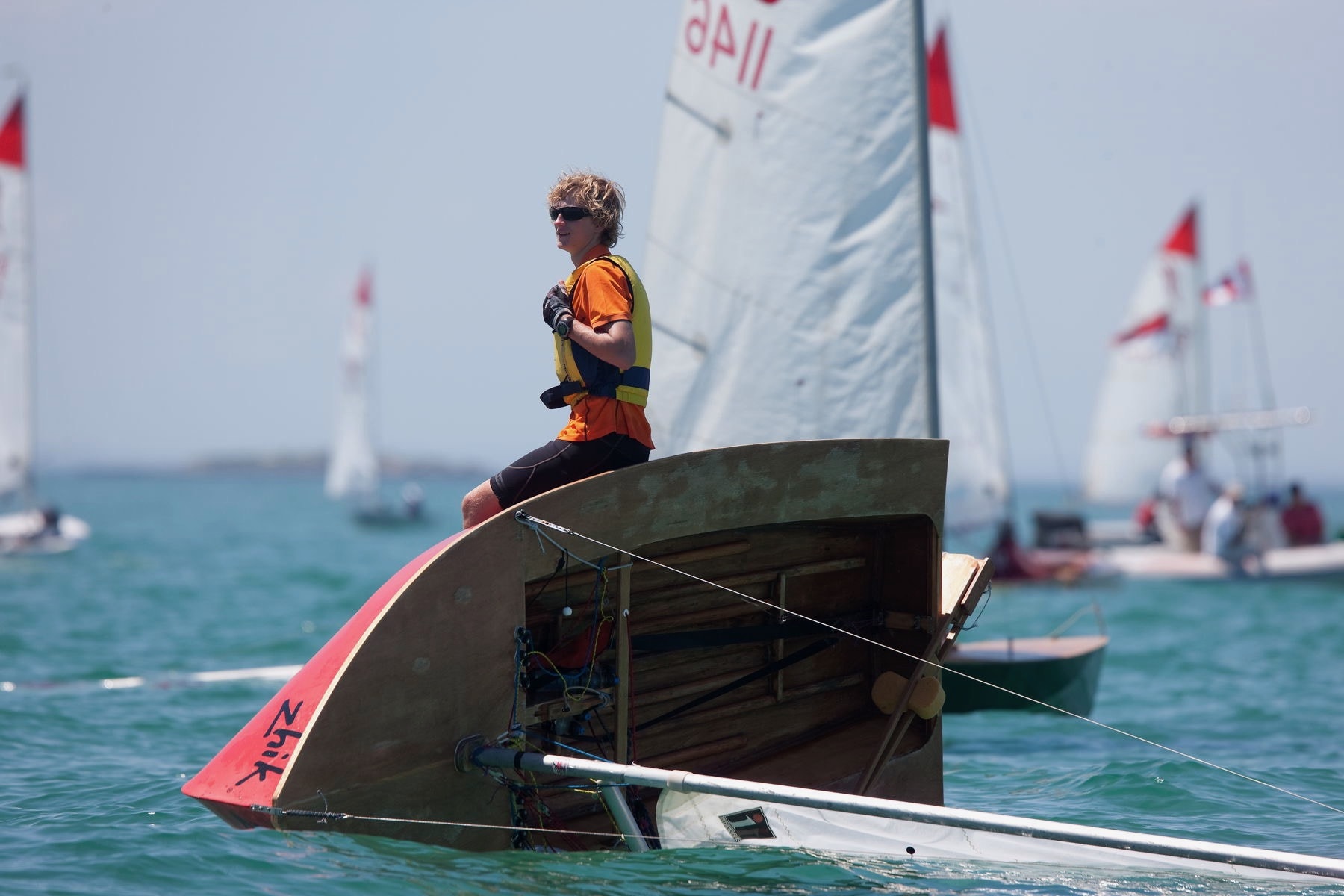Beginners

If you have just bought a boat and are starting out in Sabre’s then welcome.
The below links and information should assist you in making your journey easier into the Sabre class.
The intentions for buying a Sabre may be varied, and can range from some light entertainment to aspiring to win the national title. What ever your level of ambition, I am sure you will enjoy the experience.
GETTING A BOAT
You have either purchased a boat which means this section is irrelevant or you are still looking.
The Sabre website has both a for sale page and for sale forum. This is a great spot to start looking. You can also try the Trading Post as a number of boats will appear there, as well as looking at your local sailing club notice board which can be useful for finding hidden gems.
Price will vary with the age of the boat, its racing record and whether it comes ready to sail, with or without a trailer etc. The forum should be able give you an idea of the rough price boats are going for. If in doubt asking around is the best option and be mindful that prices may vary a little between states.
FOR SALE LINKS
https://www.sabre.org.au/for-sale/
https://www.tradingpost.com.au
Just like second hand cars, if you have absolutely no idea about boats, it’s always a good idea to take someone with you to have a look prior to purchase if possible.
SAFETY
Consider this the mother hen section.
Having purchased your new boat (second hand boat), it is vital you also purchase some safety equipment.
Number one is a PFD (life jacket) . Do not go sailing without one regardless of your perceived confidence level. Even the best have been caught unaware on occasions and experienced an accident. This little item is designed to save your life so wear it.
Number two – Always tell someone where you are going. This is vital. Stories abound about people who have gone sailing and been separated from their boats of all types (big and little), or alternatively have hit a no wind patch and been bobbing up and down for an extended period of time (i.e. over night).
If someone knows you’re out there, they also know to miss you.
Number three – Avoid sailing alone if you can. Common sense really. Just like swimming alone, surfing alone, hang gliding alone etc etc, if you get into any trouble, having someone around is always useful.
Number four – if you have just purchased a second hand boat, go around and do up all the fitting tightly before you go sailing. Many a second hand boat sits in the shed for years before it gets sold. This is a precaution to ensure nothing will fall off when you hit the water.
Also check you mast is water tight by submerging in water before sailing. Any gaps should be siliconed up before you go sailing. This will ensure your mast does not fill up with water when you go for a swim (which everyone does regardless of experience).
Number five – If you have never sailed before or are relatively new, practice capsizing you boat closer to shore, before proceeding out to the horizon. This lets you get used to righting the boat so you are comfortable with the activity. Also let your vang off before trying to right the boat as it will make it that much easier.
RIGGING THE BOAT
Some basics – The boat is a simple rig, with main sail only.
If you have the chance, get the person who is selling the boat to rig it for you when you buy it. At this stage take photos of everything (particularly the ropes around the mast). No it’s not a silly idea. As easy as it looks with an experienced person doing it, odds are you will get home and spend an hour trying to recapture the experience.
In summary the sabre is controlled via 4 adjustable control lines. These are the main sheet (main rope in the boat that changes the boom angle), vang (attaches between the boom and mast), outhaul (fitting on the end of the boom) and Cunningham / downhaul (pulls the sail down the mast).
Sail trim is adjusted via these four options to provide the sail shape required to move the boat forward under all wind conditions.
Getting these 4 combinations right will take time. If in doubt set the outhaul half way out, the Cunningham half on and play with just the main sheet and vang. Rule of thumb is that if it is windy pull the vang on, if not let it off.
If you’re new to sailing it may also help to put some wool or cassette tape on the side stays of the boat to help determine where the wind is coming from. Alternatively a wind indicator can also be purchased to achieve the same outcome.
All boats will have 2 additional controls you can adjust – although not on the water. These include mast rake and traveller. The mast rake determines the angle of the mast to the deck. This is adjusted via the side stays (the left and right hand wires coming off the mast), as well as how tight the forestay is (wire on front of the mast). For an indication of what angle to set your mast refer to the below rigging guide.
FITOUT GUIDE
Click here to view the Sabre Fitout Guide – by C. Dance
Note if you want to just go sailing and the boat seems to handle fine, then leave the mast rake where it is and go enjoy. Some people like to fiddle but if its working leave it.
The traveller is the rope that goes from the thwart (bit of in the middle of the boat at the back of the centreboard case) to the boom and back. The traveller is generally a set and forgot control on most occasions. For advice on where to set the traveller, refer to the rigging guide or have a look at other sabres at your nearest yacht club to get a feel for what is normal/average. The above should be enough to get you out and sailing.
TO JOIN A CLUB
You will likely find that a club in your local area also has Sabres in its fleet. It is always useful to join a club, if simply to meet like minded people who can provide advice in your sailing journey.
Additionally you will find a Sabre association at the state level. Many associations have get together weekends for racing training and associated social activities. This is another way to meet people and share in the wider experience.
Joining a club is not compulsory as many just want to sail for personal enjoyment, but for those who wish to take the sport further, the local club is your first step and all clubs will be happy to welcome new members and make you welcome. The sabre site has a list of clubs at each state. Refer to the listing of local clubs on each state page of the website.
ADDITIONAL INFORMATION
Below is a host of links to provide support to your journey in the sabre class. The Sabre site has lots of information collected historically, and if in doubt you can always post a note on the forum to get a specific question answered. Good luck and see you on the water.
HOW DO YOU FIND OUT MORE ?
Browse the rest of this website, which contains a wealth of information on all things Sabre.
Better still why not also come and have a chat with some Sabre sailors at one of the Sabre clubs?
